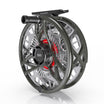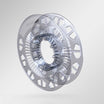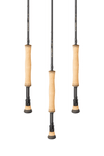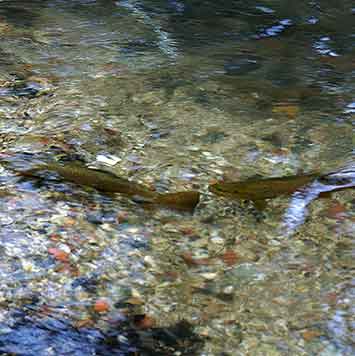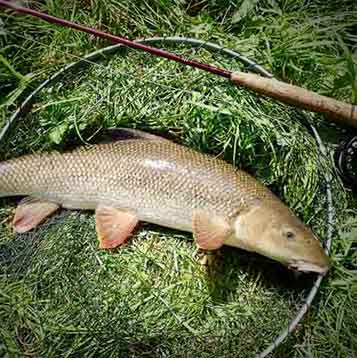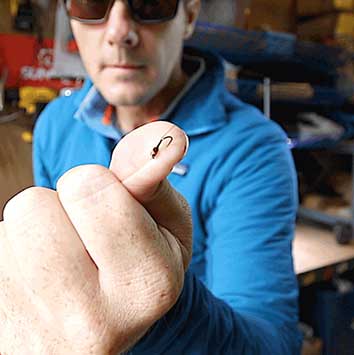Whilst drift-boat fishing the Bitterroot river in Montana a few years ago the guide informed me that it was estimated that most of the fish in the river were caught half a dozen times during the year. I am sure that the same is true of the trout & grayling in many heavily fished UK waters. So it is vital that, with few exceptions, we return the fish we catch safely to the water & that we take care of their aquatic habitats.
So how do we make sure that our precious fish are adequately protected? In no particular order I offer you the following suggestions:
- Use barbless hooks. They cause significantly less damage to fish, angler, landing nets & clothing. Furthermore, having fished barbless for over 17 years using flies down to size 30, I’m convinced that I loose no more fish with barbless hooks than I did with barbed hooks.
- Fish with as heavy a tippet as you can get away with. Overlong playing of fish on light lines increases the risk of a lethal anaerobic buildup of lactic acid in their tissues, particularly in warm summer waters which are low in dissolved oxygen. Whilst I am a great advocate of very light fly lines for trout & grayling fishing (1 to 3 weight) I rarely use tippet finer than 0.13mm diameter (a quoted breaking strain of 4lb 12oz), only dropping down to 0.10mm (3lb) when fishing flies of size 24 or smaller. I know that relatively thick, stiff tippet compromises the presentation of small flies, however this can be mitigated to some degree by tying the fly into a loop knot (Rapala Knot or Perfection Loop) that allows the fly to move more freely. Whilst fishing in New Zealand a few years ago I successfully fished a size 18 Willow Grub on 0.18mm (7.9lb) tippet. Some folks will say that the fish will be put off by the sight of thick tippet: I believe this to be a myth since when I attach a pinch of fluorescent floating putty to the thick (0.5mm diameter) butt of my leader when changing from my dry fly setup to nymph fish I regularly have fish take the putty.
- Handle the fish as little as possible & keep it out of the water for as little time as possible. If a fish has fought hard & you have to remove the fish from the water to unhook or photograph it give it time to recover in the net in the water before taking it out of its oxygen supply (it takes time for lactic acid to be removed from the fish’s tissues: think of how long it takes a sprinter to get his or her breath back after they have gone anaerobic: if you stopped them gasping for breath they’d die!!!!).
- Never handle fish with dry hands (it would remove protective mucus) & never squeeze a struggling fish since it can crush vital organs, particularly the swim bladder that the fish uses to regulate its buoyancy (grayling can be a real problem as they struggle) & never hold a fish high up or over a hard surface (just in case it does jump out of your hands).
- If, like me, you take photos of many of your fish have the camera easily to hand & with any settings already done so that the process takes no more than a few seconds. I use an Olympus TG4 waterproof compact set on program mode & -0.3 stops exposure. I keep it attached to a bungee cord in an open jacket pocket, ready for instant singlehanded use. IF IN DOUBT RELEASE THE FISH WITHOUT TAKING A PHOTO.
- If a fish has fought to exhaustion make sure that you revive it thoroughly by holding it facing the flow before you release it. All too often I’ve seen fish released prematurely only to watch them turn upside down or get jammed in a weed bed then die.
- When wading, particularly in shallow gravelly riffles & pool tails keep an eye out for clean patches of gravel & avoid standing on them as they may well be spawning redds. On most rivers trout spawn in October & November (as late as February on some chalk streams). Grayling spawn in April on most streams. Salmon generally spawn between October & February. Sea trout generally spawn in the autumn.
- Get involved in protecting & enhancing the aquatic environments by joining & if possible actively participating in the work of agencies like the Wild Trout Trust, the Riverfly Partnership, your local Rivers Trust & Salmon & Trout Conservation UK. (I’ll say more about the Riverfly Partnership & their invertebrate sampling to monitor our rivers’ health in a later Blog).
- If your club’s management policy includes stocking with tame, farmed, triploids try your best to persuade them to stop. I have irrefutable, statistically significant evidence of the damage done to the wild trout & grayling on one of my local rivers as a result of stocking with large numbers of oversized brown & rainbow trout. My catch rate on the unstocked parts of this East Yorkshire river are two to three times that on the stocked section.
- If your club’s management policy includes removing every overhanging branch & bit of submerged debris so that members can easily cast try to persuade them that it is no good being able to cast to where the fish no longer live (destroy a fish’s home & it will move on & look for another one, probably in some other club’s unmanaged fishery if there is one on the same river).
Without YOUR HELP our fisheries will continue to suffer the insidious decline that I’ve seen on most rivers over the 60 plus years that I’ve been fishing. The only exceptions that I’ve seen are the northern industrial rivers where the polluting industries have collapsed & hard-working groups (like SPRITE in the Sheffield area) have fought to bring them back to life.

Rapala Loop Knot, size 20 Agapetus Pupa & 0.16mm tippet

“Keep them wet” & “revive before release”

Clean patches of gravel could be spawning Redds!






